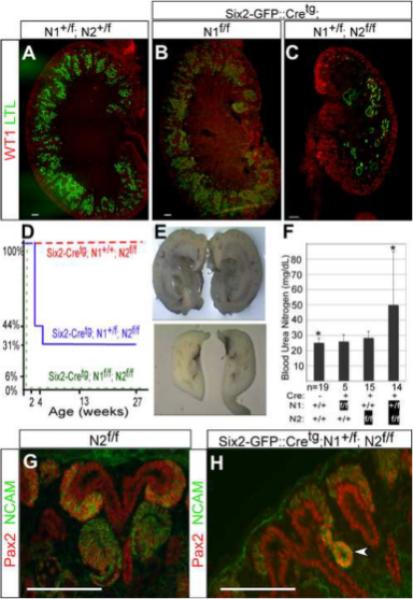Figure 3. Inactivation of Notch1 in the Notch2-deficient kidneys reveals that Notch1 is required for nephrogenesis, normal renal function and survival.

WT1 and LTL staining of post-natal day one (A) wild type (N1+/f; N2+/f), (B) Six2-GFP∷Cretg;N1f/f and (C) Six2-GFP∷Cretg;N1+/f;N2f/f kidneys reveals reduced number of proximal tubules with the inactivation of one Notch1 allele in the Notch2-deficient background. (D) The graph depicts the percentage of mice of a genotype surviving as they age up to six months. Whereas the Six2-GFP∷Cretg; N2f/f mice (n=10) have a normal lifespan (red dashes), the Six2-GFP∷Cretg;N1+/f; N2f/f mice (n=16) have a variably reduced lifespan (blue line) and Six2-GFP∷Cretg;N1f/f;N2f/f mice (n=4) die soon after birth (green dashes). (E) Bisected kidneys from one Six2-GFP∷Cretg;N1+/f; N2f/f mouse that died at six months revealed one hydronephrotic obstructed kidney (top panel) and a second hypoplastic kidney (bottom panel). (F) The blood urea nitrogen (BUN) levels are increased in Six2-Cretg; N1+/f;N2f/f mice within the first week of birth when compared with wild-type littermates (49.8±35.2 mg/dL, n=14, compared with 25± 3.1 mg/dL in controls, n=19, *p=0.0045). The average BUN levels are represented by the height of each bar and one standard deviation by the error bars. (G) In post-natal day one kidneys of N2f/f mice NCAM and Pax2 staining revealed comma and S-shaped structures in the nephrogenic zone. (H) Abnormal nephron segmentation was evident by the presence of abnormal NCAM+, Pax2+ structures (arrowhead) in the nephrogenic zone of Six2-GFP∷Cretg;N1+/f;N2f/f kidneys. All scale bars are 100um.
